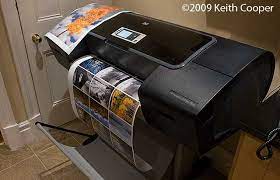Printer RIP and TransferRIP - Acrorip: Enhancing Digital Printing Workflows
In the world of digital printing, Printer RIP (Raster Image Processor) and TransferRIP - Acrorip software play indispensable roles in achieving high-quality, accurate, and vibrant print results. These software solutions are essential components that streamline the printing process and optimize image transfers onto various substrates. Let's dive deeper into their functionalities and how they enhance digital printing workflows.
1. Understanding RIP (Raster Image Processor):
In the digital printing realm, RIP refers to a specialized software or hardware that acts as an intermediary between the computer and the printer. Its primary function is to interpret digital image files, be it in vector or bitmap formats, and convert them into rasterized data that the printer can understand and reproduce. The term "rasterize" implies converting the image into a matrix of individual pixels, each having its own color information.
Key Functions of a RIP Software:
A. Color Management: One of the most critical functions of a RIP software is color management. It ensures consistent color reproduction between the original image and the printed output. With the ability to interpret ICC (International Color Consortium) profiles, the RIP software can accurately translate color information from the digital image to the printer, considering the color gamut of the printing system and the substrate.
B. Halftoning: When dealing with continuous-tone images, the RIP software is responsible for converting them into halftones. Halftoning is the process of breaking down a continuous-tone image into a pattern of dots. These dots vary in size and spacing to simulate the perception of different shades of gray or color. Halftoning is essential for producing quality prints with smooth gradients and tonal variations.
C. Image Optimization: RIP software allows users to optimize image quality and resolution to match the capabilities of the printer and the substrate. This optimization ensures that the printed output accurately represents the original image, free from artifacts and distortions.
D. Printer Driver: The RIP software also acts as a printer driver, acting as a communication bridge between the computer and the printer. It enables the user to control various printing parameters such as resolution, paper type, ink density, and more.
2. TransferRIP - Acrorip: Specialized RIP for Image Transfers and Sublimation Printing:
A. Sublimation Printing: Sublimation printing is a digital printing process used to transfer images onto various substrates like fabrics, ceramics, metal, and more. Unlike traditional printing methods, sublimation printing uses special inks that, when exposed to heat and pressure, convert from a solid to a gaseous state, bonding with the substrate's fibers or coating. This process results in vibrant and long-lasting prints, making it popular in the textile, promotional, and personalized gift industries.
B. The Role of TransferRIP - Acrorip: TransferRIP is a specialized RIP software specifically designed for sublimation printing and image transfers. Acrorip, a popular solution in this category, is tailored to handle the unique requirements of sublimation printing, ensuring optimum results on a wide range of substrates.
C. Color Accuracy: Acrorip ensures accurate color output for sublimation printing. It takes into account the characteristics of sublimation inks and the target substrate to deliver vibrant and true-to-life colors. This feature is crucial for businesses that require consistent branding or high-quality reproductions of artwork and photographs.
D. Image Optimization for Substrates: TransferRIP - Acrorip enables users to optimize images specifically for the sublimation transfer process. The software adjusts image details and color saturation to match the unique properties of the substrate, resulting in stunning prints with excellent detail and clarity.
E. Handling Large-Format Images: In many cases, sublimation printing involves dealing with large-format images, such as banners or fabric rolls. TransferRIP - Acrorip efficiently manages these large files, ensuring that printing performance is not compromised while maintaining print quality.
F. Printing Parameter Control: Similar to other RIP software, TransferRIP - Acrorip acts as a printer driver, allowing users to fine-tune printing parameters according to their specific requirements. This flexibility enables users to achieve optimal results on different materials, producing high-quality prints across various substrates.



%20(1).jpg)
Comments
Post a Comment